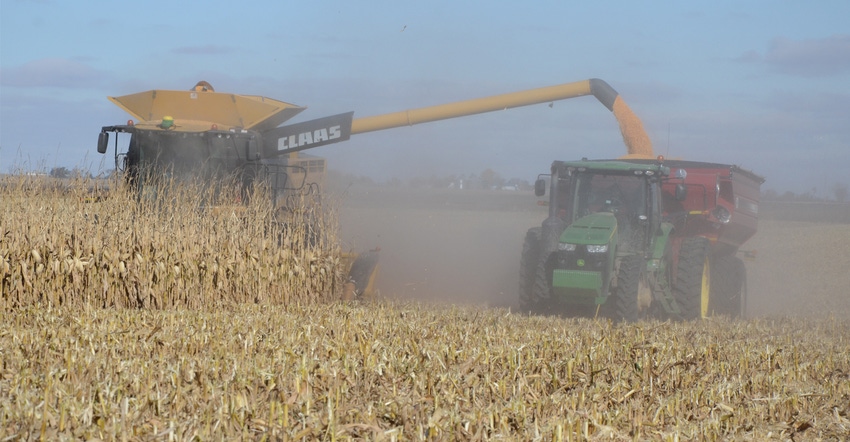October 21, 2019

By John Wilson
While harvest has been delayed in many areas of Nebraska because of wet conditions, in other areas fields are dry and harvest is progressing.
Each year, volunteer fire departments across the state are called to respond to combine or field fires started during harvest operations. The following steps can help ensure a smoother and safer harvest season without fire emergencies:
Combine maintenance
Preventative maintenance is key to preventing many of the fires that occur on farm equipment.
Keep all bearings and gears well lubricated to prevent heat buildup, and keep lubricants at proper levels.
Repair any leaks in the fuel system and any damaged electrical wiring.
Repair or replace damaged or worn-out exhaust systems. In addition to a good exhaust system, install a spark arrester to catch burning particles. They are easy to install and require little maintenance.
Before and during harvest operations, check for a buildup of combustible crop residue around the engine and exhaust system; concealed drive belts and pulleys that can overheat due to friction when there is an accumulation of crop residue around them; and worn or frayed electrical wiring that can cause sparks and ignite grain dust, crop residue or fuel vapors.
Refueling safety
Too often during harvest, safe fueling practices are ignored to save time. The few seconds saved are insignificant when compared with the loss of expensive farm equipment or weeks or even months spent in a hospital burn ward. Follow these safety practices:
Never refuel equipment with the engine running. Always shut the engine off.
Allow hot engines to cool 15 minutes before refueling.
Extinguish all smoking materials before refueling.
If fuel spills on an engine, wipe away any excess and allow the fumes to dissipate before starting the engine.
Plan to avoid emergencies
Being prepared to respond to a fire if one should occur can save critical minutes.
Start harvesting a field on the downwind side. If a fire does occur, the flames will be pushed toward the harvested portion of the field.
Always carry a cellphone or alternative for communicating with others in case of an emergency.
Know the location of the field in relationship to letters or numbers on county roads. This seems obvious, but in the excitement of the moment, it’s easy to not be able to recall this information. More than once, volunteer firefighters have been paged for a field fire “northeast of town” and then had to look for the smoke.
Always carry two fire extinguishers on the combine, one in the cab and one that you can access from the ground. Also, carry a fire extinguisher in your grain hauling equipment.
If a field or equipment fire does occur, call 911 before trying to extinguish it yourself.
Have a tractor hooked to a disk near the field you are harvesting, but located where it wouldn't be affected if a field fire should occur.
If using a fire extinguisher, stay between the fire and your path to safety.
When using a fire extinguisher, remember to PASS, which stands for Pull, Aim, Squeeze, and Sweep: Pull the safety pin on the extinguisher. Aim it at the base of the fire. Squeeze the handle. Sweep the extinguisher back and forth while releasing the contents.
Following these safety tips may seem like common sense, but with the long hours and rush to get harvest done, sometimes they are forgotten.
For information on fire safety at harvest, contact your equipment dealer, your local fire department or your local Nebraska Extension office.
Wilson is a Nebraska Extension educator.
Source: UNL CropWatch, which is solely responsible for the information provided and is wholly owned by the source. Informa Business Media and all its subsidiaries are not responsible for any of the content contained in this information asset.
You May Also Like




